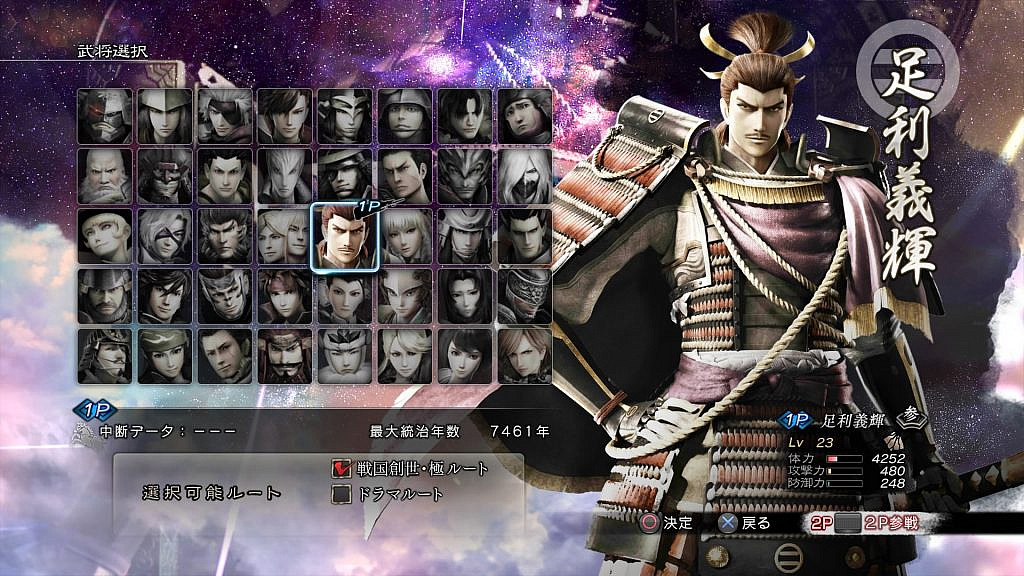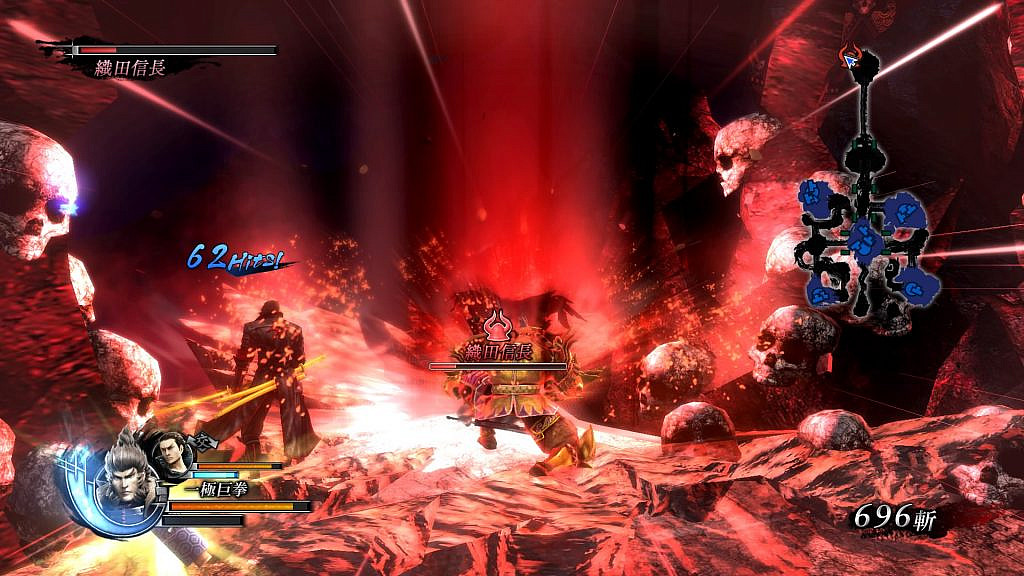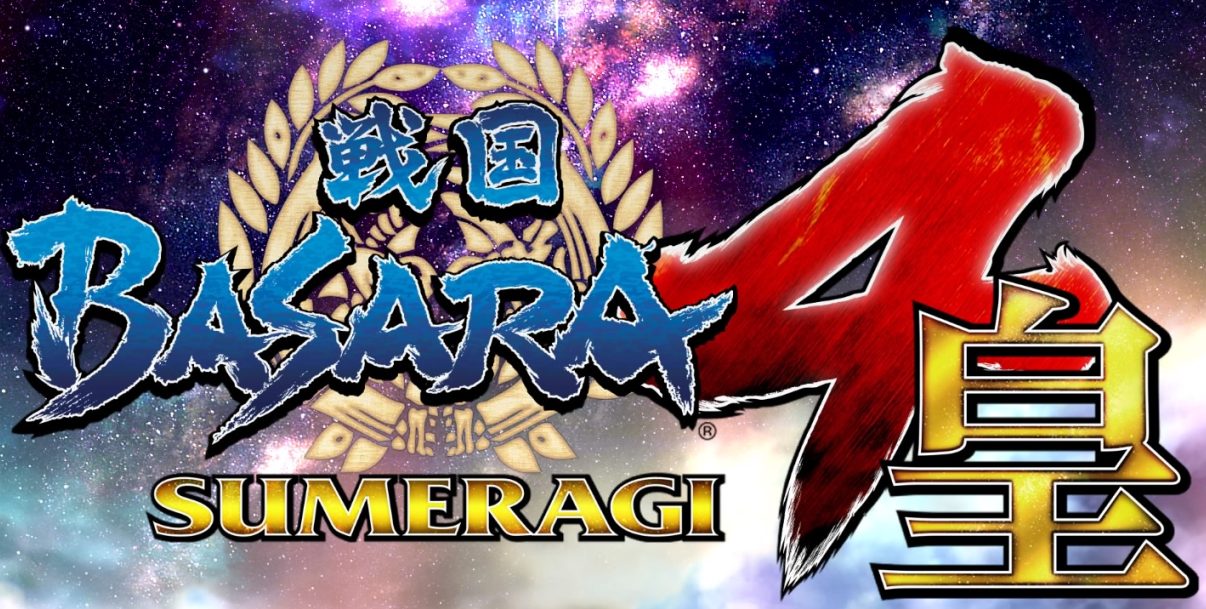Sengoku BASARA 4: Sumeragi (“Emperor”) is a musou (essentially, one man army) styled action game that takes place in Japan during a period known as Sengoku (Warring States – 1467-1615); a period of constant civil war. However, the chronology is somewhat irrelevant to BASARA since the characters do not age and the series is generally historically inaccurate. It’s better to think of it just as the setting with key elements from history, such as famous battles or rivalries between characters like Uesugi Kenshin and Shingen Takeda.
Sumeragi serves as an expansion to the original version featuring new characters, routes and mechanics while also retaining the content of the original. It features 40 playable characters to choose from, most of whom loosely represent their famous historical selves, such as Yukimura Sanada or Masamune Date.
As a word of warning, this is a Japanese only title. Thankfully, there is a repository for all necessary game material translated into English by a fan.

There are two game modes: story mode and free mode. In the former, you choose your character, choose the difficulty and off you go on different stages until you hit the end of the route. Free mode is there to freely select and play stages you’ve unlocked.
On top of selecting your primary character, you also get to select a partner character to freely switch between during the battle, but a second player can also take the role of the second character and so you can enjoy the game through split-screen.
The stages are split between duel stages where you fight against a handful of enemy officers (playable characters) and larger battlefield stages with capturable camps, lots of faceless foot soldiers as well as some enemy officers. The battlefield stages can be highly imaginative, such as Motochika Chōsokabe’s ship with its numerous death traps and a fight against a walking battleshiptank, complete with lasers and flamethrowers. Historical accuracy at its finest. Many of the maps are more standard battlefields, but each has its unique objectives and gimmicks. The end goal of each map remains the same though: defeat the stage boss. After finishing a stage, you get rewards, including materials and new weapons, which you can then further forge using inscriptions (stat boosts) and make even better, further enhancing your character’s combat prowess.

Gameplay is indeed the primary highlight of Sumeragi and it was the primary reason I ever got around to importing the game. Each of the characters feels unique to play and none of them feels useless with their unique move sets complete with super moves that you unlock through levelling the characters up. Some of the moves include completely ludicrous stuff like Yukimura Sanada using one of his two(!) dual-wielded(!!) spears and becoming a spinning top or Magoichi Saika casually pulling out a rocket launcher that locks on and launches dozens of missiles at your enemies. All of this just makes it even more fun!

My only real gripe with the game is the fact that the target lock-on system is just terrible. It’s limited to the unique officers and it’s completely automatic, rather than something you can toggle on/off and change targets on a whim. This leads to camera-related problems where you can’t sometimes keep your eyes on the enemy.
Overall, Sumeragi is a real treat if you can get around the import and language barriers. It’s a relaxing experience where you can just complete a single route or even a single stage and then drop it only to come back later and progress further without any actual pressure about completing the game.
Players: 1-2 (local)
Publisher: Capcom
Developer: Capcom
Platforms: PS3, PS4
Release Date: 23.7.2015
Genres: Action / Musou
CERO rating: B (12+)
Pictures of the game: Screenshots, taken by the author.
